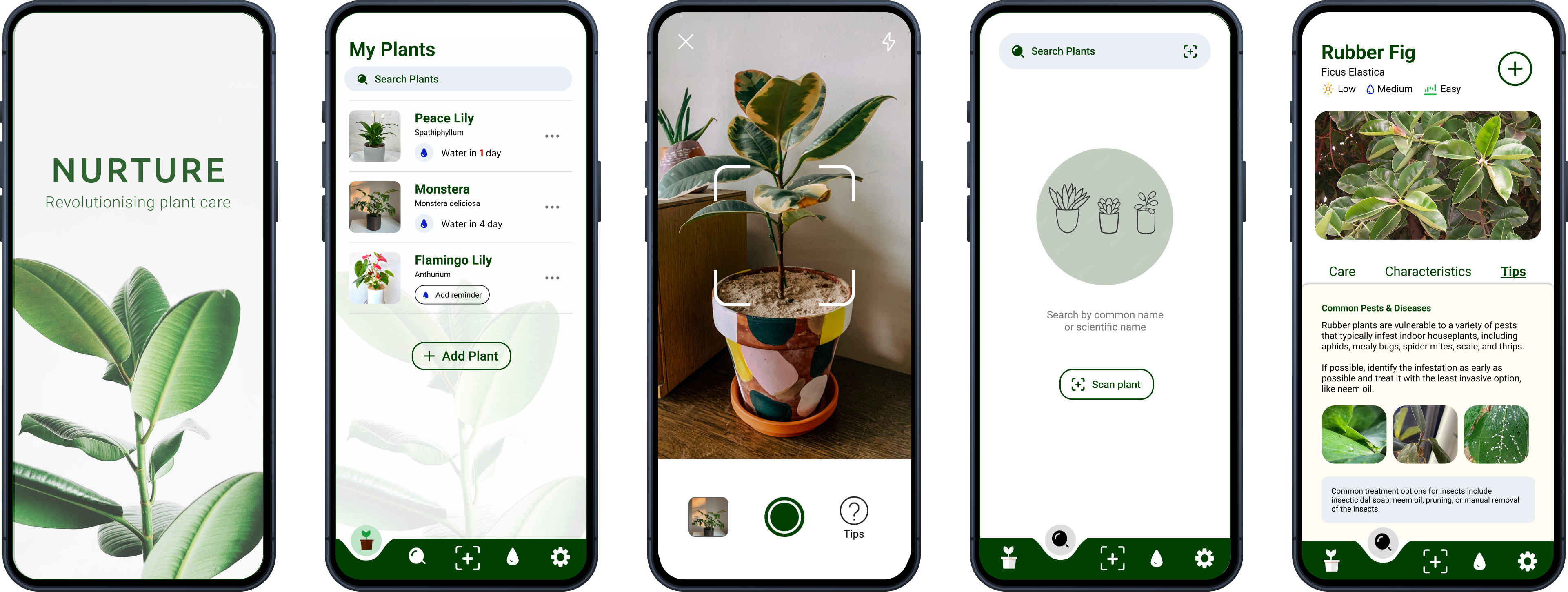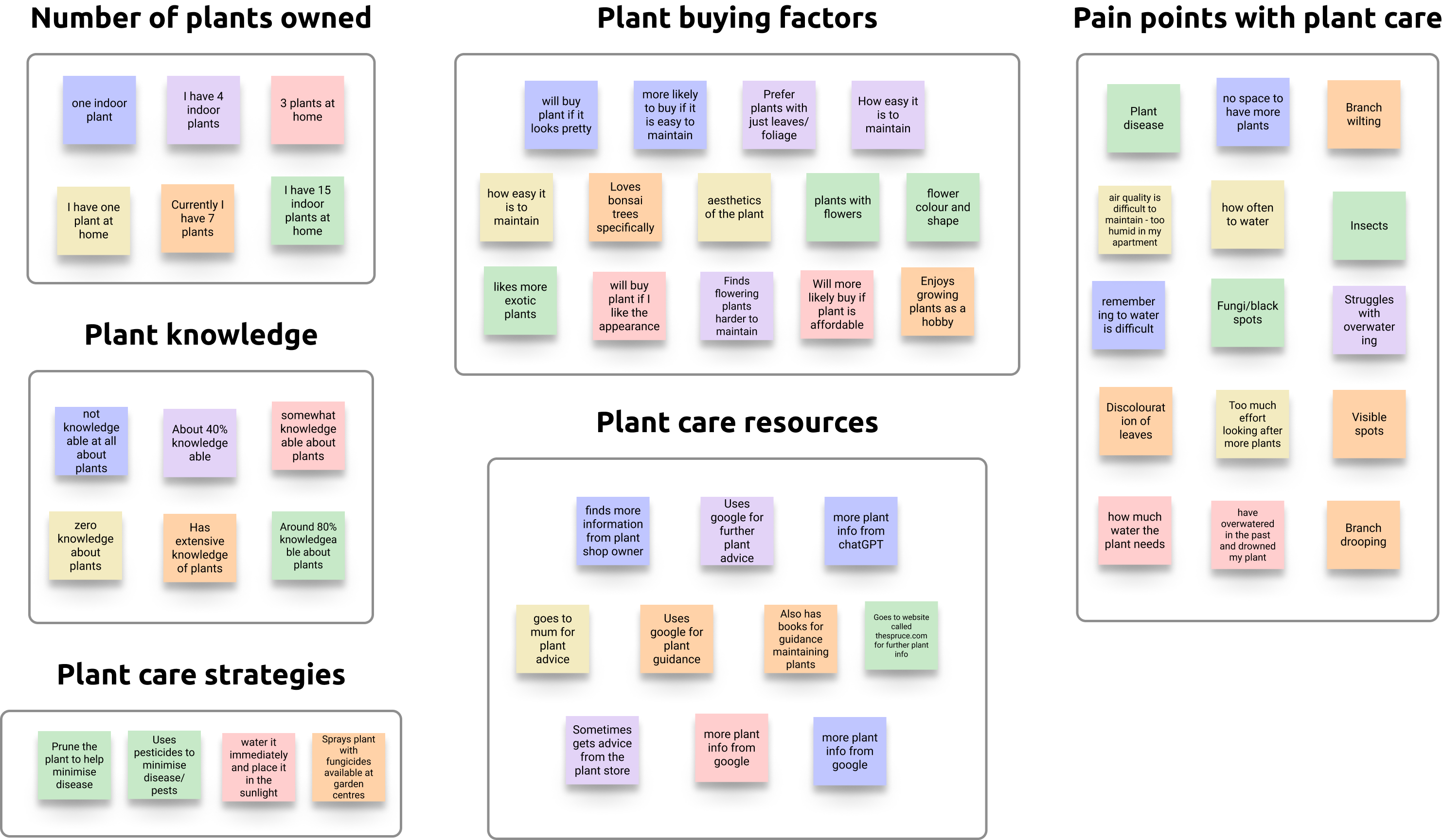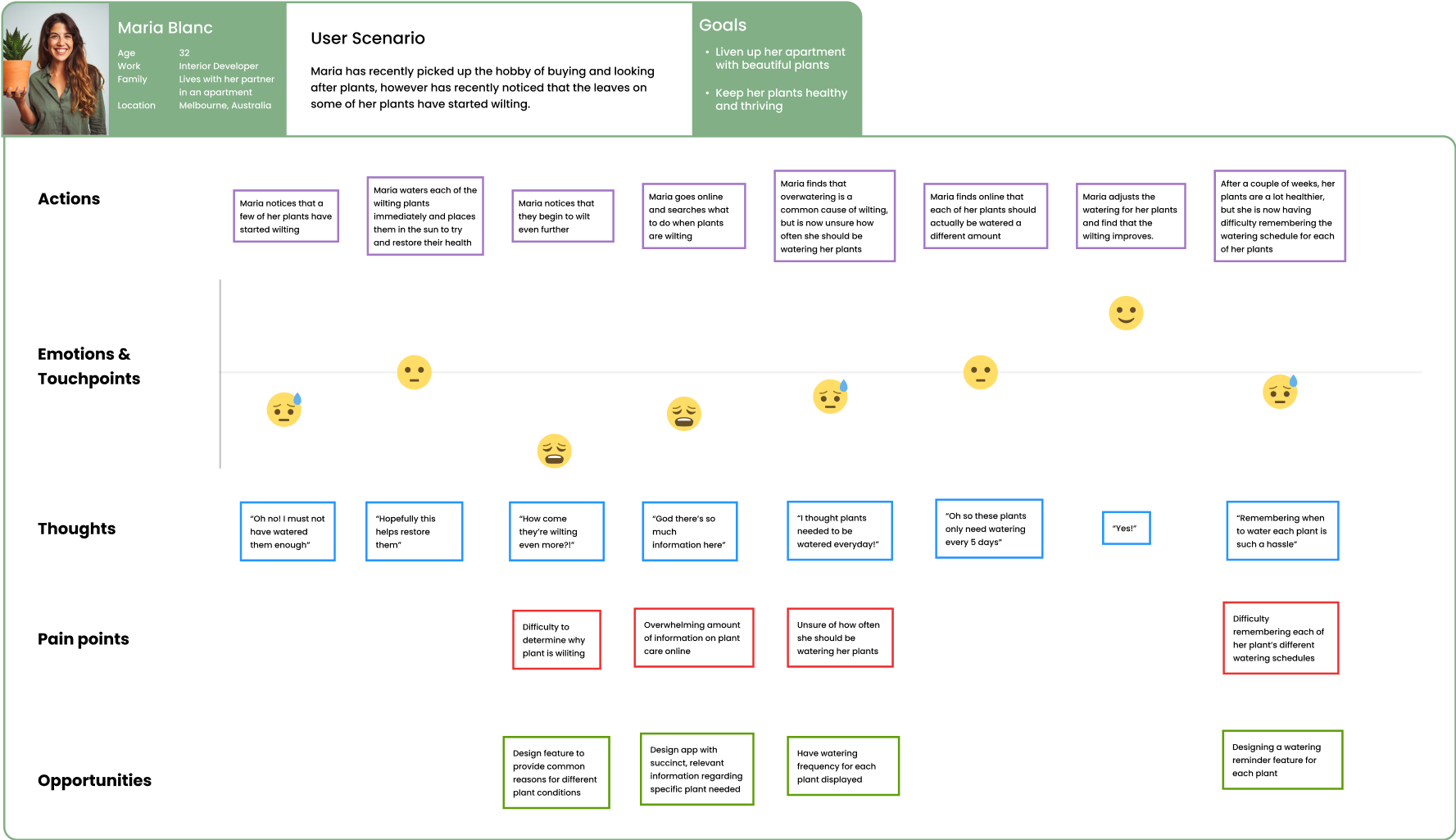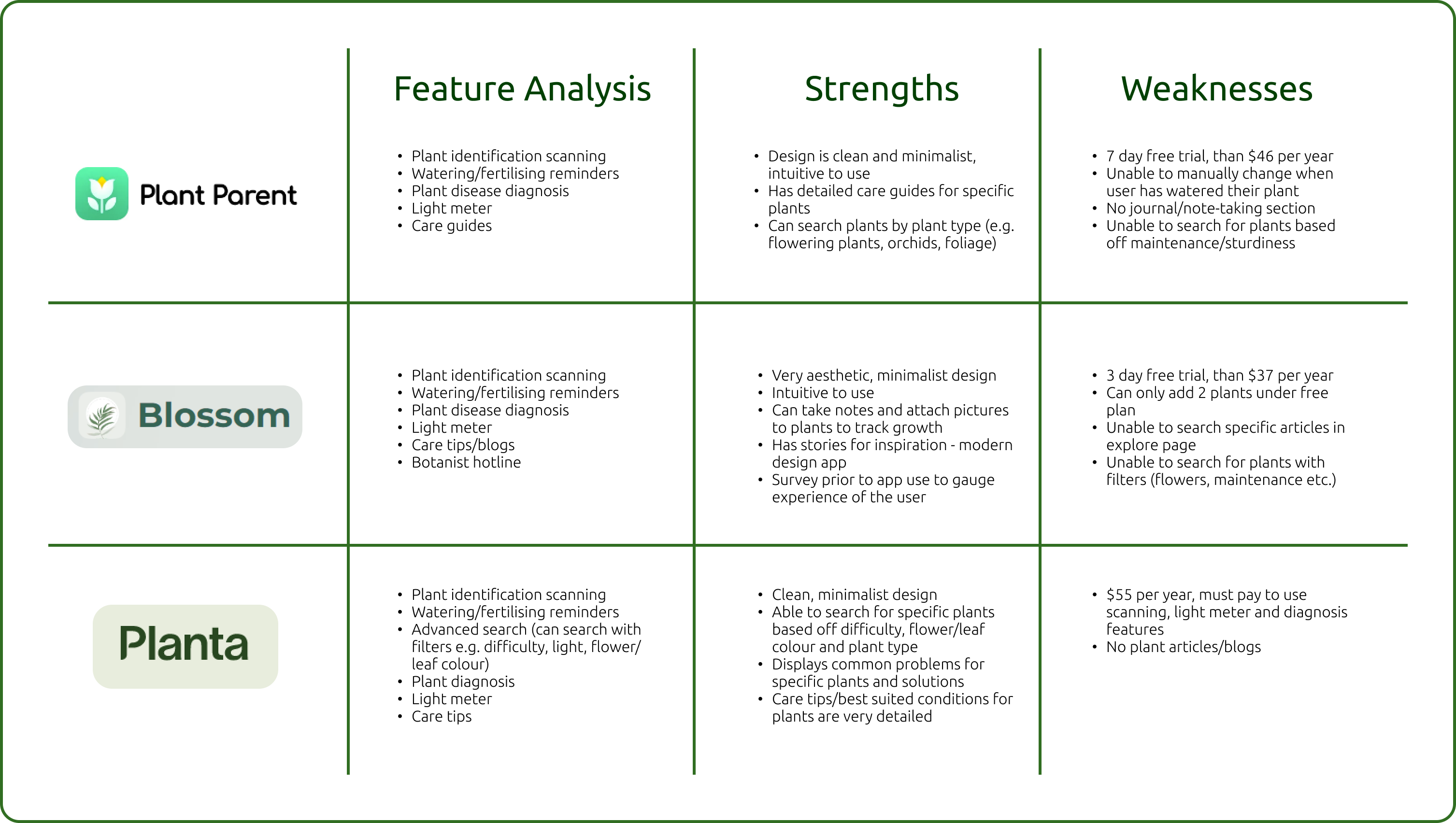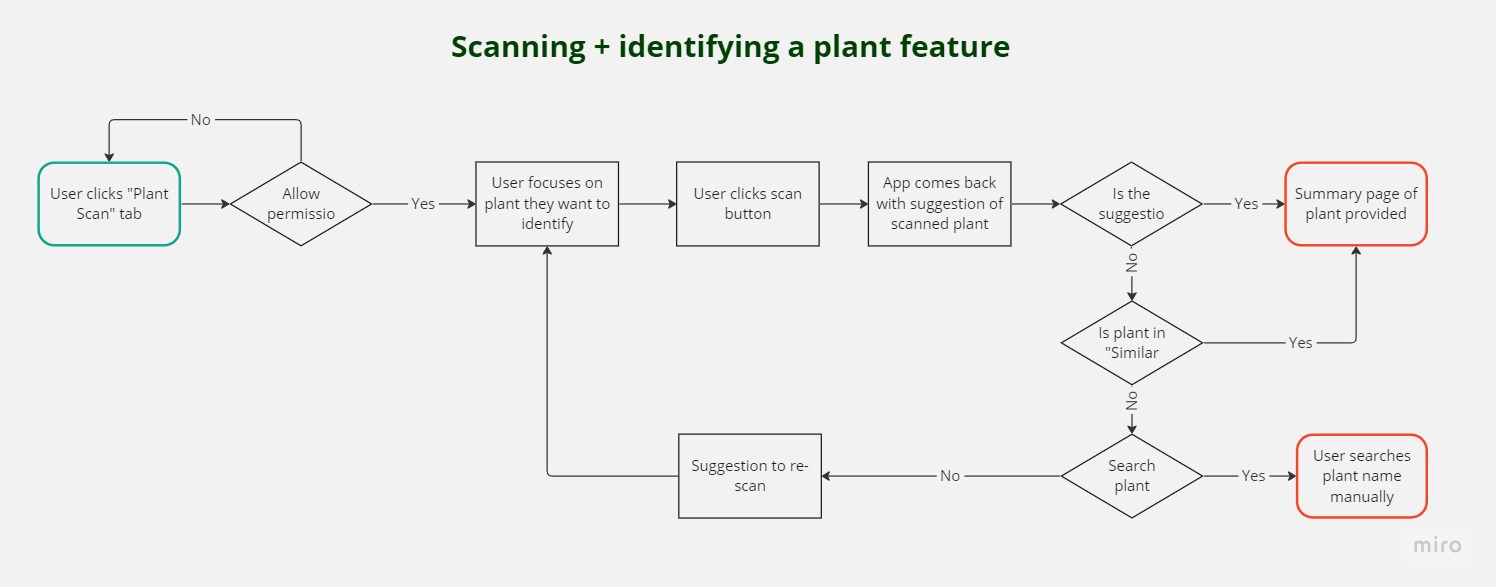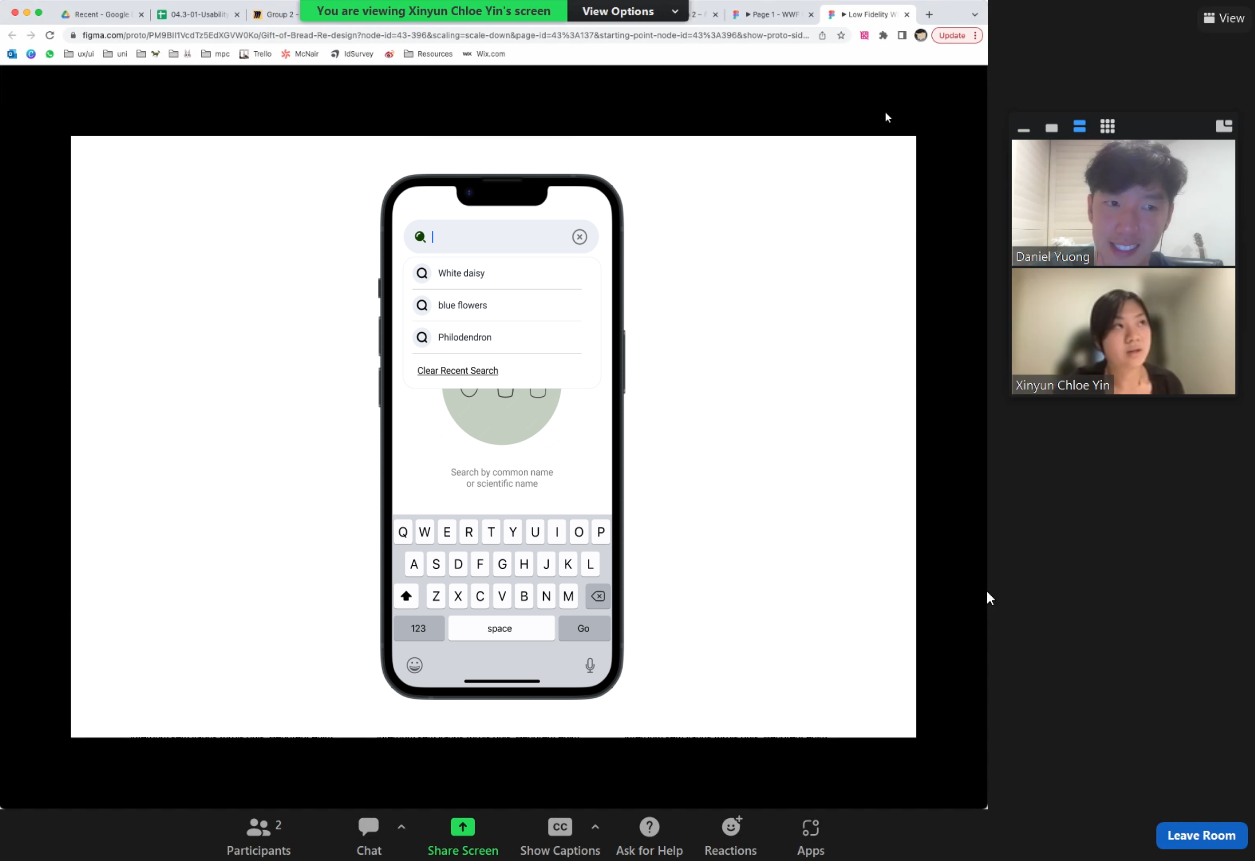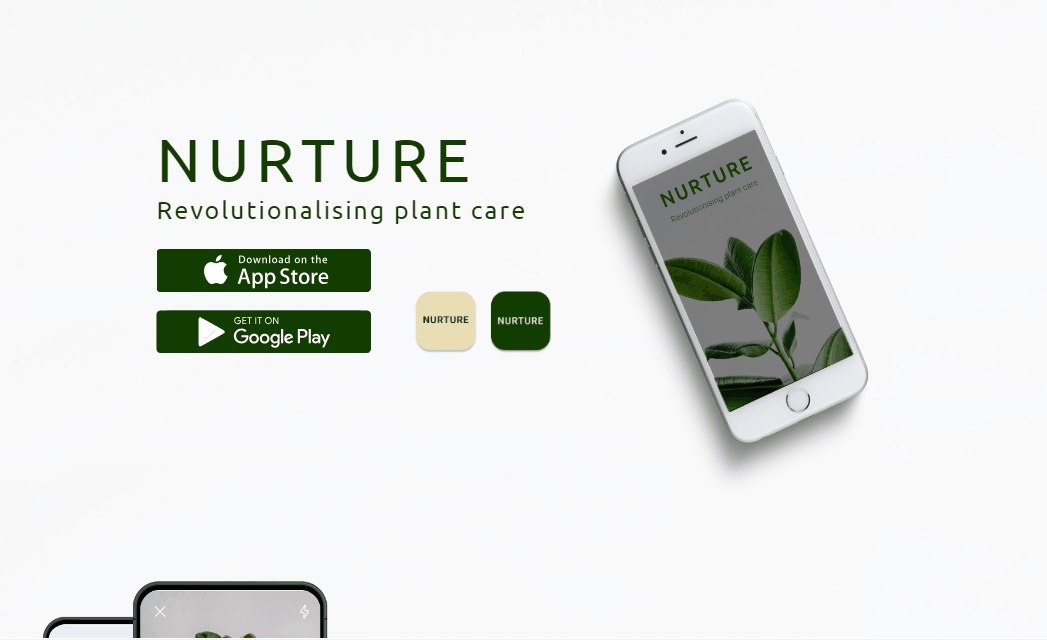To complete our project, we designed and coded a landing page to display the features of our app.
We utilised HTML, CSS and Javascript to build a responsive webpage, hosting it through GitHub Pages.
Nurture
Designing a plant-care mobile app
